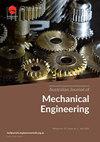The use of artificial intelligence in driver-in-the-loop simulation: a literature review (2023)
IF 1.3
Q3 ENGINEERING, MECHANICAL
Australian Journal of Mechanical Engineering
Pub Date : 2023-09-21
DOI:10.1080/14484846.2023.2259709
引用次数: 0
Abstract
ABSTRACTArtificial intelligence (AI) techniques are a reality in the most diverse engineering research and, intuitively, the same is true for automotive development. Meanwhile, driver-in-the-loop (DiL) simulation allows researchers to develop and test different vehicles and correlated systems without the need to build physical prototypes. Considering the increasing goal of reducing cost, project time, and most importantly the impact on the environment, the advantages of DiL simulation become even higher. In this scenario and given the growing need for analysis of considerably large sets of data obtained especially by the use of simulators, the present work undertakes a literature review regarding the use of artificial intelligence in driver-in-the-loop simulations. To do so, some keywords are defined as some boundary conditions also are, e.g. how old the paper is aiming not to consider outdated tools and technologies. Passing through three eliminatory revision steps, the full text of the final selected works is read with the aim to define where the research that uses IA and DiL simulation is aimed. The findings suggest that most of the works use the aforementioned tools to develop autonomous vehicles and their correlated systems. Finally, a discussion about this result is proposed and then a guideline for amplifying the reach of the present literature review is suggested.KEYWORDS: Artificial intelligencedriver-in-the-loop simulatorliterature reviewvehicle dynamicsvirtual simulation AcknowledgementsThis study was financed in part by the Coordenação de Aperfeiçoamento de Pessoal de Nível Superior – Brasil (CAPES) – Finance Code 001.Disclosure statementNo potential conflict of interest was reported by the author(s).Data availability statementThe authors confirm that the data supporting the findings of this study are available within the article or its supplementary materials.Additional informationFundingThe work was supported by the Coordenação de Aperfeiçoamento de Pessoal de Nível Superior [001].Notes on contributorsCádmo Augusto Rodrigues DiasCádmo Augusto Rodrigues Dias received the M.S. degree in Mechanical Engineering in 2021 and B.S. degree in Mechanical Engineering (minored in Mechatronics) from Pontifícia Universidade Católica de Minas Gerais (PUC Minas), Belo Horizonte, MG, Brazil, in 2020, and currently is PhD student in PUC Minas, working at the SIM Center Laboratory. During this time, he worked on the correlation and the development of virtual vehicle models to vehicle dynamics simulations. His current research interests include vehicle dynamics, virtual simulation and vehicle simulators, artificial intelligence and software development.Jánes Landre JúniorJanes Landre Jr. received the B.S. degree in Mechanical Engineering from PUC Minas in 1987. Has specialization in Management Development Program from Fundação Dom Cabral (2004), MSc in Aeronautical and Mechanical Engineering from Instituto Tecnológico de Aeronáutica (ITA), SãoPaulo, SP, Brazil, in 1991, PhD in Metallurgical Engineering from Federal University of Minas Gerais (UFMG), Belo Horizonte, MG, Brazil, in 2001, and improvement in a Management Development Program from PUC Minas (2011). He is currently an Adjunct Professor at PUC Minas, reviewer for a development project of the National Council for Scientific and Technological Development and journal reviewer for the Indian Journal of Dental Research, Journal of the Brazilian Society of Mechanical Sciences and Thin-Walled Structures. Has experience in Materials and Metallurgical Engineering minored on Transformation Metallurgy. Acting mainly on the following themes: Forging, damage, FEA and vehicle dynamics.人工智能在驾驶员在环仿真中的应用:文献综述(2023)
人工智能(AI)技术在最多样化的工程研究中是一个现实,直观地说,汽车开发也是如此。同时,驾驶员在环(DiL)模拟允许研究人员开发和测试不同的车辆和相关系统,而无需建立物理原型。考虑到降低成本、项目时间以及最重要的对环境的影响这一日益增长的目标,DiL仿真的优势变得更加突出。在这种情况下,鉴于越来越需要分析大量数据集,特别是通过使用模拟器获得的数据集,本工作对人工智能在驾驶员在环模拟中的使用进行了文献综述。为了做到这一点,一些关键词被定义为一些边界条件,例如,论文的目标是不考虑过时的工具和技术。通过三个淘汰修订步骤,阅读最终选定作品的全文,目的是确定使用IA和DiL模拟的研究的目标。研究结果表明,大多数工作都使用上述工具来开发自动驾驶汽车及其相关系统。最后,对这一结果提出了讨论,然后提出了扩大本文献综述范围的指导方针。关键词:人工智能、环内河流模拟器、文献综述、车辆动力学、虚拟仿真。致谢本研究由巴西高级交通协调组织(CAPES)、金融代码001部分资助。披露声明作者未报告潜在的利益冲突。数据可用性声明作者确认在文章或其补充材料中可以获得支持本研究结果的数据。本研究得到了高级医疗卫生组织 高级医疗卫生组织的支持[001]。contributorsCádmo奥古斯托·罗德里格斯DiasCádmo奥古斯托·罗德里格斯·迪亚斯于2021年获得机械工程硕士学位,并于2020年获得Pontifícia米纳斯吉拉斯大学Católica(米纳斯吉拉斯州贝洛奥里藏特)机械工程学士学位(辅修机电一体化),目前是米纳斯大学米纳斯分校的博士研究生,在SIM中心实验室工作。在此期间,他致力于虚拟车辆模型与车辆动力学仿真的关联和发展。他目前的研究方向包括车辆动力学,虚拟仿真和车辆模拟器,人工智能和软件开发。Jánes Landre JúniorJanes Landre Jr.于1987年获得PUC Minas机械工程学士学位。2004年毕业于funda o Dom Cabral管理发展项目,1991年毕业于巴西圣保罗市Tecnológico de Aeronáutica研究所(ITA)航空与机械工程硕士学位,2001年毕业于巴西米纳斯吉拉斯州贝洛奥里藏特联邦大学(UFMG)冶金工程博士学位,2011年毕业于米纳斯吉拉斯州公共大学(PUC Minas)管理发展项目。他目前是PUC Minas的兼职教授,国家科学和技术发展委员会发展项目的审稿人,以及印度牙科研究杂志,巴西机械科学和薄壁结构学会杂志的期刊审稿人。有材料和冶金工程经验,辅修变形冶金。主要研究以下主题:锻造、损伤、有限元分析和车辆动力学。
本文章由计算机程序翻译,如有差异,请以英文原文为准。
求助全文
约1分钟内获得全文
求助全文
来源期刊

Australian Journal of Mechanical Engineering
ENGINEERING, MECHANICAL-
CiteScore
3.70
自引率
7.10%
发文量
77
 求助内容:
求助内容: 应助结果提醒方式:
应助结果提醒方式:


